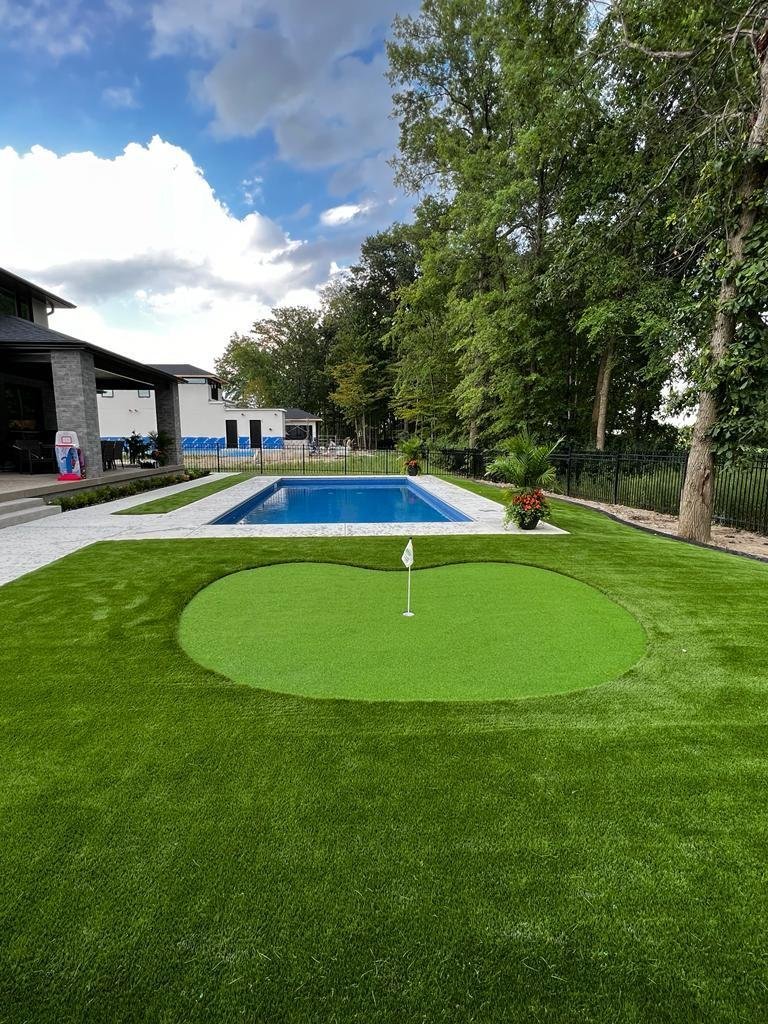As artificial turf becomes more popular for residential and commercial landscapes, homeowners and property managers often wonder what happens when artificial turf reaches the end of its life cycle. While artificial turf itself is made out of recycled material in some cases, with a lifespan lasting 10-20 years depending on use and maintenance, the question of disposal or recycling is crucial to ensure that its environmental impact is minimized. In this blog, we’ll explore the recycling process for artificial turf, current industry practices, and innovations that contribute to sustainability.
The Lifespan of Artificial Turf
Artificial turf is engineered to withstand years of foot traffic, weather exposure, and UV rays, making it an attractive option for backyard designs and public spaces alike. Many landscaping companies in Windsor and Essex offer premium turf products that resist wear and tear. However, like all products, artificial turf eventually wears out, especially in high-traffic areas or extreme climates.
When turf reaches the end of its functional life, proper disposal becomes essential. Rather than sending old turf to landfills, a more sustainable approach is to recycle or repurpose it.
Recycling Artificial Turf: How It Works
Recycling artificial turf has become a priority for the industry, with several companies and initiatives dedicated to reducing waste. The recycling process for turf typically involves separating the various components, including the infill (sand or rubber) and the synthetic grass fibers.
- Component Separation: Artificial turf consists of multiple layers—synthetic fibers, backing materials, and infill. During the recycling process, these layers are separated using specialized machinery. The synthetic fibers and backing are shredded, while the infill is cleaned and repurposed.
- Reusing Infill Materials: The infill, often made of rubber or sand, can be reused in new turf installations or other industrial applications. This reuse helps reduce the need for new materials in future synthetic grass installations.
- Repurposing Synthetic Fibers: The synthetic fibers from the turf are recycled into raw materials for various products. For example, old turf fibers can be used to make new plastic products or construction materials, reducing the demand for virgin plastic.
Many artificial turf installation companies are partnering with recycling facilities to ensure that their products don’t end up in landfills, contributing to a circular economy.
Innovations in Artificial Turf Recycling

In recent years, advancements in technology have made the recycling of artificial grass products more efficient and eco-friendly. Some manufacturers have developed fully recyclable turf systems designed from the ground up with end-of-life recycling in mind. These products are engineered so that each layer can be easily disassembled and reused.
Additionally, turf recycling companies are constantly innovating ways to repurpose old turf into new applications. From playground surfaces to outdoor mats, old fake grass installations can be given new life in various forms.
The Environmental Impact of Artificial Turf Recycling
Choosing to recycle your old artificial grass is an important step in reducing your environmental footprint. By ensuring that materials are repurposed and reused, you’re not only extending the life of the turf but also helping to reduce the demand for new raw materials. This approach is aligned with the values of companies like Turrific Turf, who prioritize sustainability in their landscape design projects.
Choose Turrific Turf for Eco-Friendly Solutions
At Turrific Turf, we are committed to providing top-quality artificial grass products in Windsor and Essex while considering the environmental impact of our services. Our Astroturf installation experts understand the importance of sustainability and work closely with customers to find eco-friendly solutions, including recycling artificial turf when necessary. If you’re interested in enhancing your backyard design with artificial grass while making an environmentally conscious choice, contact Turrific Turf today for expert advice and service.


